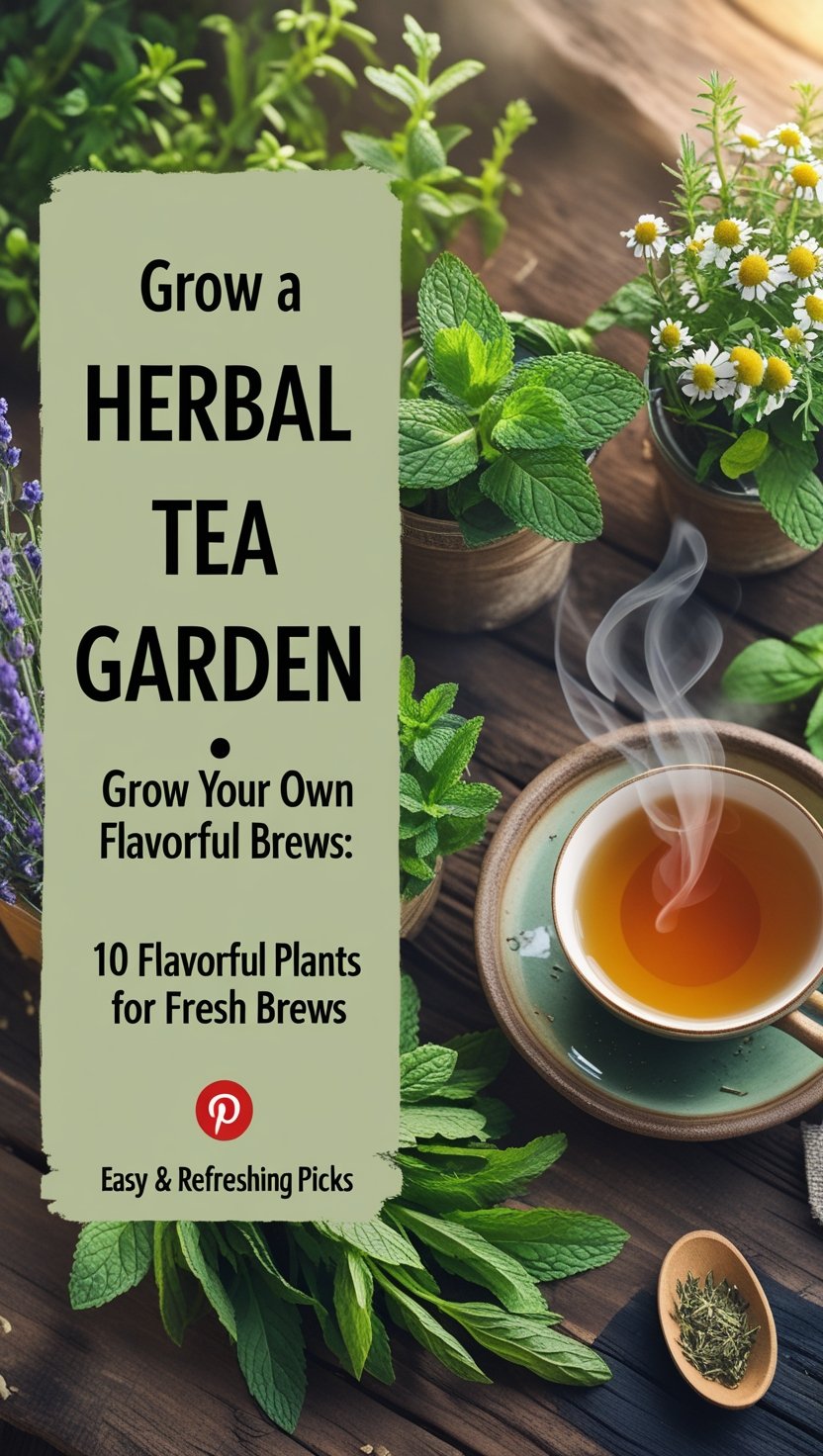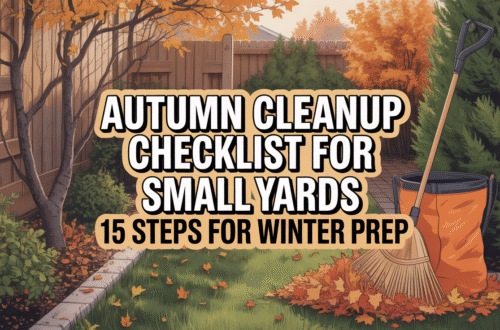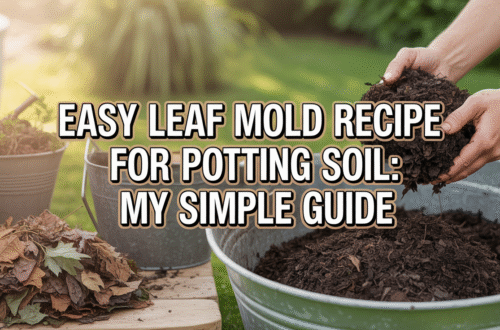Discover 10 herbal tea garden plants for your backyard. Learn how to grow an herbal tea garden, harvest, and brew fresh teas. Start today!
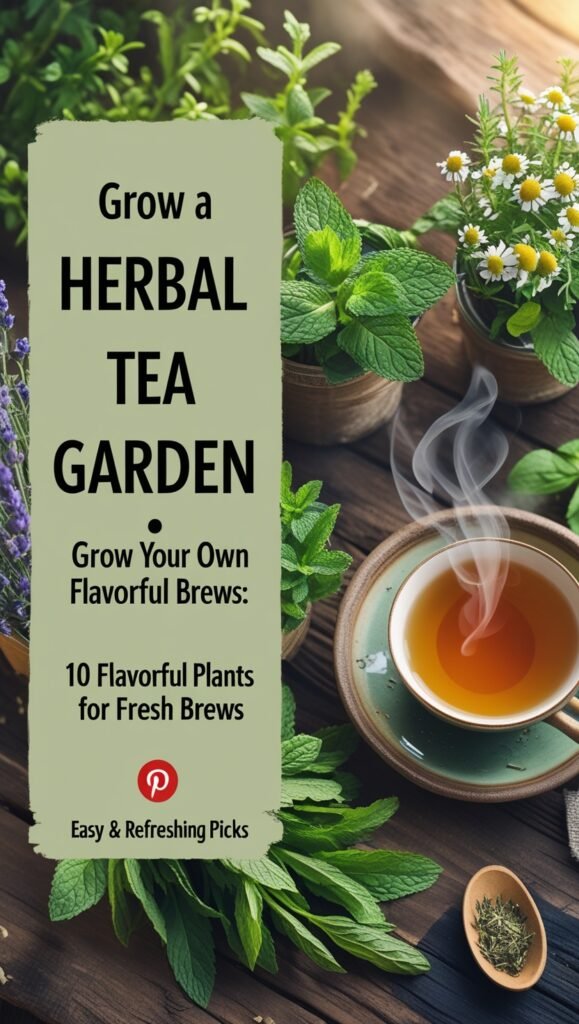
Hey there, gardening friends! I’m Ashley Scott, and with 10 years of gardening experience, I’ve grown everything from towering sunflowers to tiny herbs. One of my favorite projects? Building an herbal tea garden right in my backyard. There’s nothing like stepping outside, picking fresh leaves or flowers, and brewing a cup of tea that’s bursting with flavor. If that sounds like your kind of fun, you’re in the right place!
Here at USA Garden Hub, I’m all about making gardening easy and enjoyable for folks across the USA. In this guide, I’ll share 10 herbal tea garden plants that are perfect for beginners and pros alike. We’ll cover how to grow an herbal tea garden, tips for harvesting, and how to turn your plants into delicious teas. Plus, I’ll sprinkle in some personal stories and tea garden ideas to inspire you. Let’s dig in!
Why Grow an Herbal Tea Garden?
So, what’s the big deal with an herbal tea garden? For me, it’s about having fresh, organic tea ingredients at my fingertips. No more guessing what’s in those store-bought bags—just pure, homegrown goodness. Plants used in herbal tea are often super easy to grow, even if you’ve only got a small space like a balcony or windowsill.
Beyond that, gardening is my go-to stress-buster. Pair it with sipping a cup of tea I grew myself, and it’s pure bliss! Whether you’re dreaming of a backyard tea garden or a cozy indoor setup, growing your own herbal tea plants is a rewarding adventure.
10 Best Herbal Tea Garden Plants
Ready to meet the stars of your tea plant garden? Here are 10 herbal tea garden plants that are easy to grow, taste amazing, and bring a little magic to your garden. For each one, I’ll break down the growing basics, harvesting tips, and how to brew the perfect cup.
1. Chamomile (Matricaria chamomilla)
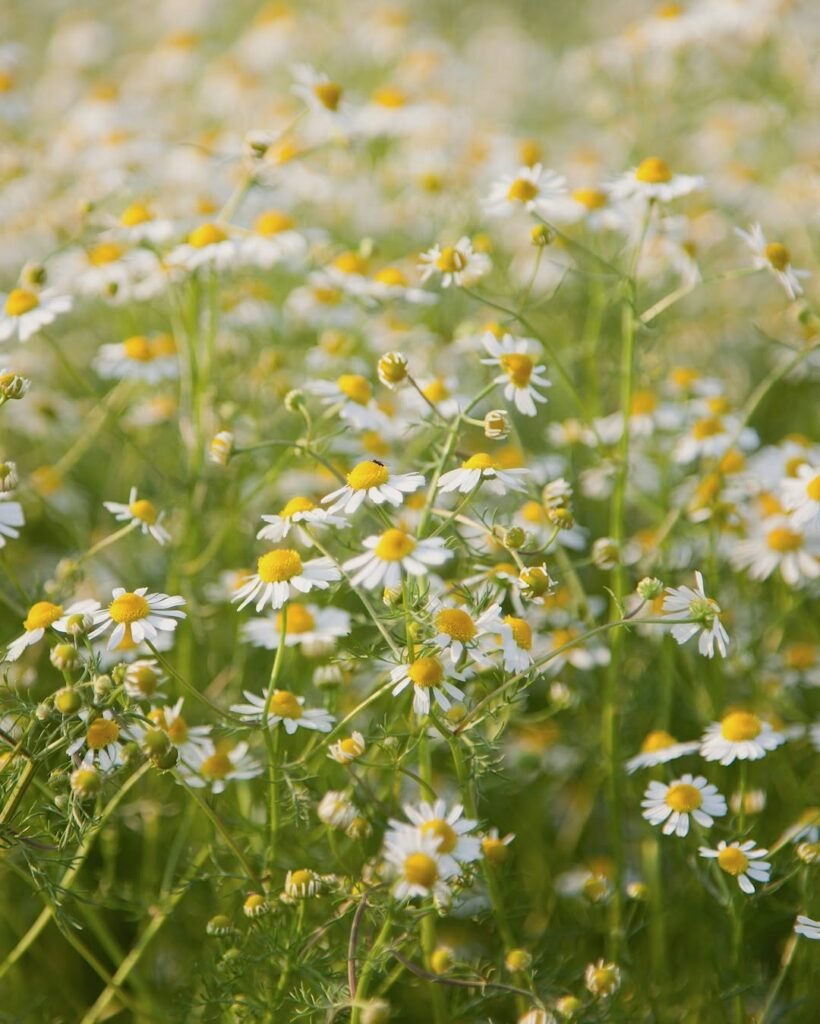
- Description: This little beauty has small, daisy-like flowers and a gentle vibe. It’s a tea classic!
- Growing Conditions: Loves full sun and well-draining soil. It’s tough once it gets going.
- Harvesting: Pick the flowers when they’re fully open—late morning is best.
- Tea Preparation: Dry the flowers, then steep 1 tablespoon in hot water for 5 minutes.
- Flavor and Benefits: Sweet and apple-like, perfect for relaxing after a long day.
My Experience: I once overwatered my chamomile and nearly lost it. Now I know—less water, happy plant!
2. Peppermint (Mentha × piperita)

- Description: Bright green leaves with a cool, refreshing scent. It grows like crazy!
- Growing Conditions: Partial shade and moist, rich soil. Use a pot to keep it contained.
- Harvesting: Snip leaves anytime, but before flowering is tastiest.
- Tea Preparation: Fresh or dried, steep 1 teaspoon for 5-7 minutes.
- Flavor and Benefits: Minty and crisp, great for digestion and headaches.
Lesson Learned: My peppermint once took over my garden. Now I grow it in a pot—problem solved!
3. Lemon Balm (Melissa officinalis)
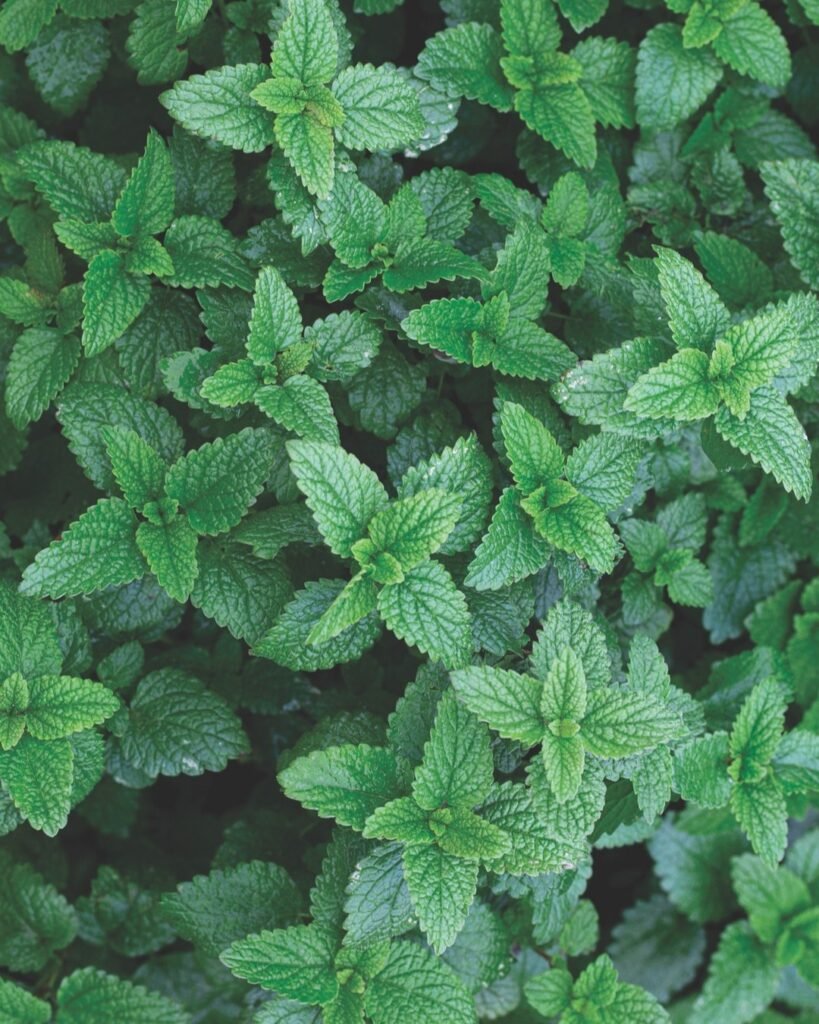
- Description: A lemony herb with heart-shaped leaves. It’s gentler than its mint cousins.
- Growing Conditions: Full sun to partial shade, well-draining soil.
- Harvesting: Pick leaves before it flowers for max flavor.
- Tea Preparation: Steep fresh or dried leaves for 5-10 minutes.
- Flavor and Benefits: Bright and citrusy, awesome for stress relief and sleep.
Garden Memory: I planted lemon balm by my patio, and now every breeze smells like lemon—love it!
4. Lavender (Lavandula angustifolia)
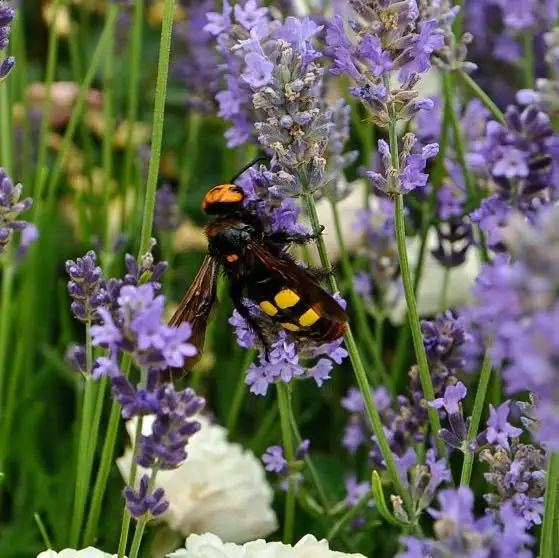
- Description: Purple flower spikes with a soothing scent. It’s a garden showstopper.
- Growing Conditions: Full sun, sandy, well-draining soil. It’s drought-friendly.
- Harvesting: Cut spikes just as they open.
- Tea Preparation: Dry the flowers, steep 1 teaspoon for 5 minutes.
- Flavor and Benefits: Floral and sweet, perfect for chilling out.
Tip: Lavender thrives in hot, sunny spots—ideal for your tea garden layout.
5. Rosemary (Rosmarinus officinalis)

- Description: Evergreen with needle-like leaves and a woodsy scent.
- Growing Conditions: Full sun, well-draining soil. Tough as nails once settled.
- Harvesting: Snip sprigs, but don’t cut into the woody parts.
- Tea Preparation: Steep fresh or dried for 5-10 minutes.
- Flavor and Benefits: Earthy and bold, boosts memory and focus.
Oops Moment: I overdid the rosemary in my tea once—a little goes a long way!
6. Echinacea (Echinacea purpurea)

- Description: Gorgeous purple coneflowers that double as tea makers.
- Growing Conditions: Full sun, well-draining soil. It’s a hardy perennial.
- Harvesting: Grab flowers and leaves in late summer.
- Tea Preparation: Dry them, then steep for 10-15 minutes.
- Flavor and Benefits: Floral with a bitter edge, great for immune support.
Bonus: Echinacea brings butterflies to your herbal garden plants—so pretty!
7. Hibiscus (Hibiscus sabdariffa)

- Description: Big, vibrant flowers—usually red or pink. A tropical vibe!
- Growing Conditions: Full sun, rich soil. Grow as an annual or in pots in cold zones.
- Harvesting: Pick the calyces (red parts) after flowers fade.
- Tea Preparation: Dry them, steep for 5-10 minutes.
- Flavor and Benefits: Tart and fruity, packed with antioxidants.
First Try: I grew hibiscus last year, and its bold color still wows me!
8. Fennel (Foeniculum vulgare)
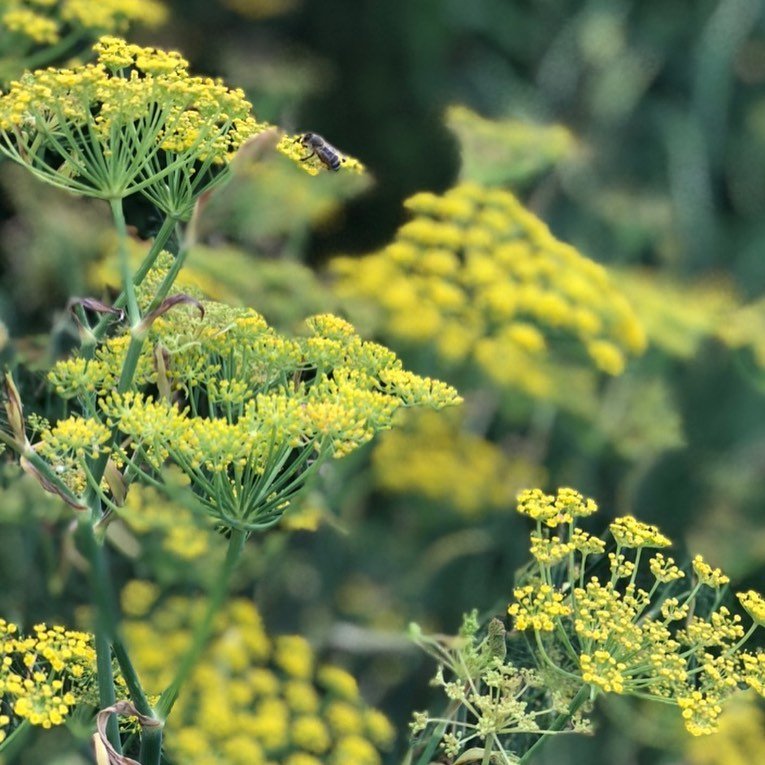
- Description: Tall with feathery leaves and a licorice scent.
- Growing Conditions: Full sun, well-draining soil. It can hit 5 feet!
- Harvesting: Collect seeds in late summer or use fresh leaves.
- Tea Preparation: Crush seeds or steep leaves for 5-7 minutes.
- Flavor and Benefits: Sweet and spicy, helps digestion and breath.
Hack: Fennel seeds are my go-to, but leaves work in a pinch.
9. Thyme (Thymus vulgaris)
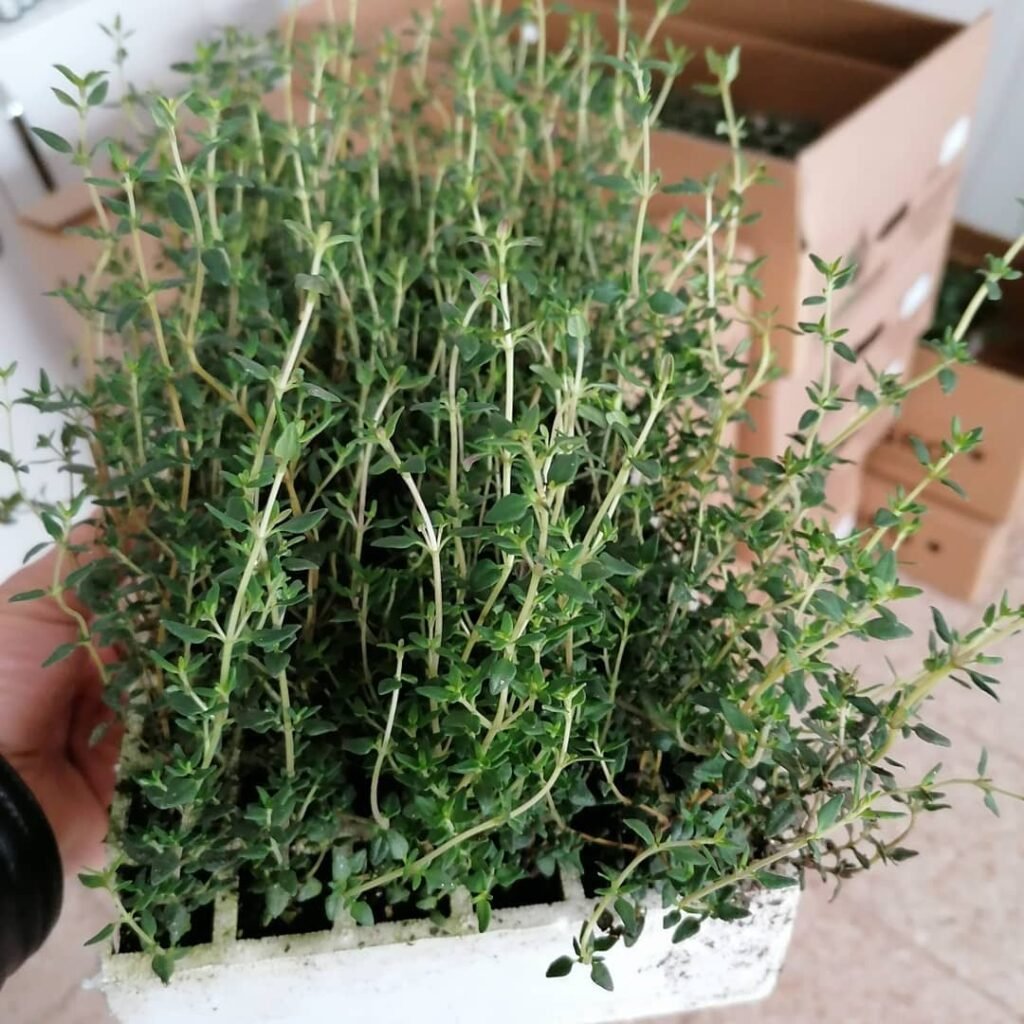
- Description: Tiny leaves on a woody frame with a subtle scent.
- Growing Conditions: Full sun, well-draining soil. Loves dry spells.
- Harvesting: Snip stems before flowering.
- Tea Preparation: Steep fresh or dried for 5-10 minutes.
- Flavor and Benefits: Earthy with a minty hint, fights germs.
Cold Cure: Thyme tea saved my throat during a cold—total game-changer!
10. Stevia (Stevia rebaudiana)
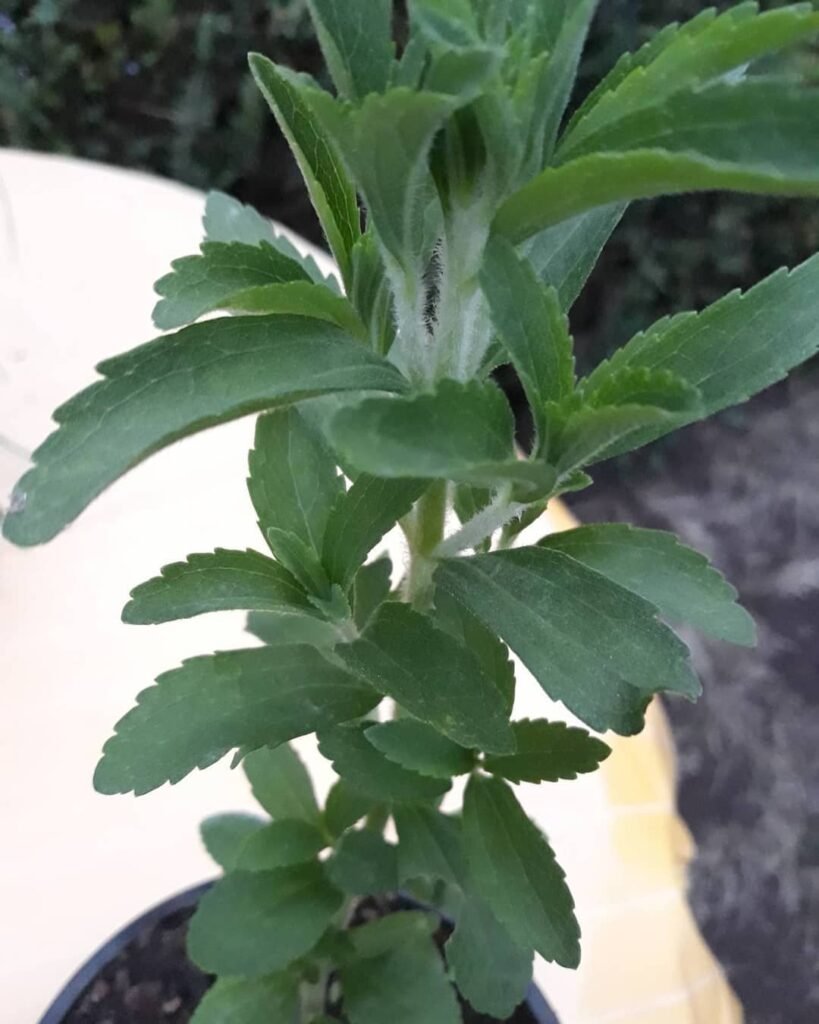
- Description: A sweet little plant with green leaves.
- Growing Conditions: Full sun, well-draining soil. Frost-sensitive, so pots work too.
- Harvesting: Pick leaves anytime.
- Tea Preparation: Add fresh or dried to sweeten other teas.
- Flavor and Benefits: Super sweet, zero calories—nature’s candy!
Tip: Start with one stevia leaf—it’s strong stuff!
How to Grow an Herbal Tea Garden: Step-by-Step
Excited to start your own herbal tea garden? Here’s how I set mine up:
1. Pick a Spot
Most herbs for tea garden love full sun (6+ hours). Choose a sunny patch in your yard, a raised bed, or even a balcony.
2. Prep the Soil
Well-draining soil is a must. Add compost or sand if it’s heavy. For pots, grab a good potting mix.
3. Plan Your Layout
Think about size—tall fennel in back, short thyme up front. Group plants with similar needs for a smart tea garden design.
4. Plant Away
Give spreaders like mint some space or use pots. Water well to settle them in.
5. Keep It Going
Water when needed, but don’t drown them—most prefer it a bit dry. Mulch to stop weeds.
6. Harvest Time
Snip what you need, but leave two-thirds of the plant to keep it growing strong.
Want more tips? Check out my Herb Gardening Basics guide!
Tea Garden Ideas to Spark Creativity
Make your herbal tea garden your own with these fun tea garden ideas:
- Calm Zone: Plant chamomile, lavender, and lemon balm for a relaxing vibe.
- Pot Party: Use a tea garden kit with containers—perfect for small spaces.
- Pathway Magic: Line a walkway with thyme and chamomile for a fragrant stroll.
- Hanging Herbs: Try peppermint in baskets for a cool vertical look.
I turned a sunny yard corner into a tea garden with a bench—it’s now my happy place!
Is Herbal Tea Good for Plants?
Here’s a quirky question: Is herbal tea good for plants? Yup! Leftover tea (unsweetened, plain) can give your plants a light nutrient boost. I’ve poured diluted chamomile tea on my roses, and they perked right up!
FAQs About Herbal Tea Garden Plants
Got questions? I’ve got answers:
What are the best plants for a tea garden?
Chamomile, peppermint, lemon balm, lavender, and rosemary top my list for flavor and ease.
How do I start an herbal tea garden?
Find a sunny spot, prep well-draining soil, and pick your favorite herbal tea plants.
Can I grow herbal tea plants indoors?
Totally! Mint and lemon balm thrive on sunny windowsills.
What’s the easiest herbal tea plant to grow?
Peppermint—it’s practically unstoppable!
Where can I get tea garden seeds?
Check out Mandevilla Red Bush Tea: A Hidden Gem for Tea Lovers and Gardeners.
Let’s Wrap It Up
Growing your own herbal tea garden plants is a blast—it’s fresh tea and gardening joy rolled into one. From soothing lavender to zesty peppermint, these 10 plants to grow for herbal tea will elevate your garden and your teacup. So, grab some tea garden seeds, and let’s get planting!
Happy gardening—and happy sipping!

